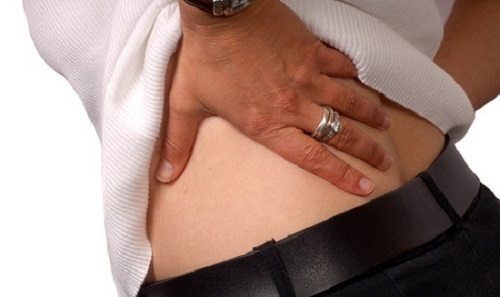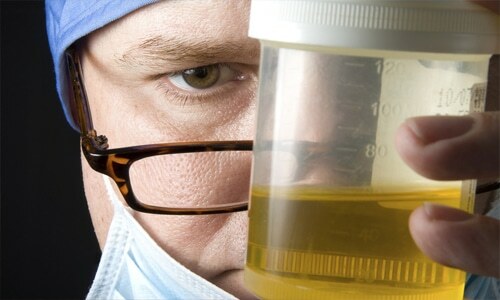Normally, when inhaled, the kidney may drop 3-4 cm, with deep breathing 5-6 cm. This is a normal reaction to movement and movement,thanks to which the normal process of urination is provided.

Under the influence of some factors, the ligament system fails to hold the kidney, and the organ begins to move uncontrollably around the body, moving up and down, turning around the axis, etc. When the organ is displaced from its bed, deviating from the prescribed norm, kidney nephroptosis is diagnosed.
Pathological renal mobility is considered quite common pathology mainly in middle-aged people.
For pathology is characterized by excessive mobility of the kidney, which is observed when the position of the body changes. Especially noticeable motor activity, when the patient is in a vertical position. Later the kidney assumes a normal location, but soon again continues to move. If the kidney is in some wrong position for a long time, then when the adhesion process develops, it is fraught with its fixation in this position.
What causes nephroptosis
Pathological renal mobility can be acquired and inherent in nature. A similar pathology occurs against the background of disorders of the renal apparatus, violations of the vascular position, thinning of the fatty capsule. Specialists identify several causes of nephroptosis:
- Abnormally reduced tone of abdominal muscles - a similar deviation causes the kidneys and other internal organs to drop;
- Various injuries of the waist or abdomen, falling from something high, kicks in the kidneys causing ligament damage;
- Curvature of the spine;
- Various infections that cause connective tissue damage to ligament and muscle tissue;
- Heavy physical labor, for example, when working as a loader, hairdresser, salesman or installer, as well as for athletes in heavy workouts;
- Excess weight or sudden weight loss - this contributes to the thinning of the capsule from adipose tissue, which leads to omission;
- Hereditary factor and congenital disorders of the structure.
Wandering of the kidney to the right is diagnosed more often( more than 70%) of left-side nephroptosis( ≈10%), since the kidney on the right is physiological norms slightly lower than the organ on the left and the ligamentous apparatus is much weaker. A bilateral pathology is diagnosed in 15% of patients.
Clinical picture of
 Kidney nephroptosis manifests itself in a very diverse symptomatology. At the initial stage, patients in standing position have pain syndrome in the lumbar region, and in the abdomen a heaviness. But when the patient lies down, the painful symptomatology disappears. In many, the initial stage of the disease is completely asymptomatic. First, the pain syndrome worries the patient only after a certain physical load such as dragging gravity or heavy sports training, etc. If the patient lies on the patient's side or back, the pain usually subsides. The nature of the pain syndrome can be of a different nature - from mild to intense, as with colic. Pain can become sudden after a change in posture or tension and different in duration( from a few minutes to hours) with a changeable intensity( pains build up, subside, then grow again).Possible irradiation of pain in the genital area and groin. In some patients, a painful attack is accompanied by a nausea-vomiting symptomatology, a cold sweat, an increase in temperature, pallor.
Kidney nephroptosis manifests itself in a very diverse symptomatology. At the initial stage, patients in standing position have pain syndrome in the lumbar region, and in the abdomen a heaviness. But when the patient lies down, the painful symptomatology disappears. In many, the initial stage of the disease is completely asymptomatic. First, the pain syndrome worries the patient only after a certain physical load such as dragging gravity or heavy sports training, etc. If the patient lies on the patient's side or back, the pain usually subsides. The nature of the pain syndrome can be of a different nature - from mild to intense, as with colic. Pain can become sudden after a change in posture or tension and different in duration( from a few minutes to hours) with a changeable intensity( pains build up, subside, then grow again).Possible irradiation of pain in the genital area and groin. In some patients, a painful attack is accompanied by a nausea-vomiting symptomatology, a cold sweat, an increase in temperature, pallor.
Warning! When detecting suspicious symptoms, self-diagnosis and self-treatment are unacceptable. This can be dangerous and fraught with irreversible complications of the disease. Therefore, the choice of methods of treatment should only be a doctor.
Many patients with pathological renal mobility lose appetite, suffer from intestinal disorders( diarrhea or constipation), feel heaviness under the spoon. With the development of the pathological state, functional nervous systemic disorders appear that manifest themselves in the form of neurasthenia or increased excitability. In such patients there is irritability, suspiciousness and mistrust of doctors. Patients are disturbed by insomnia, palpitation and dizziness, increased fatigue. Some patients note the appearance of bloody impurities in the urine. With the development of the disease, abdominal pain becomes permanent, greatly affecting the nervous system of the patient. On the background of nephroptosis, edema appears, because of vascular kinks, there are problems with pressure and hypertension occurs, pyelonephritis develops. In the thigh, sciatic and other nerves painful sensations of a neuralgic nature arise. With the development of pathology, renal blood supply deteriorates, causing stone formation and inflammatory processes in the pelvis.
The course of nephroptosis
The soreness and discomfort of the pulling-chewing character first not so brightly and quickly subside, but with the course of the pathology their intensity greatly increases and they become permanent, which exhausts the patient. Specialists distinguish 3 stages in the development of the disease:
Stage 1
It is characterized by the ability to palpate the displaced kidney at the time of inspiration, and when exhalation the kidney moves to the area of the hypochondrium, while it is possible to probe the kidney only in individuals who are excessively thin;
Stage 2
If the patient is positioned vertically, then at this stage of nephroptosis, the wandering kidney completely leaves the area of the hypochondrium. In the reclining position, it can easily be re-set back by itself or with the help of hands. This stage is characterized by pain syndrome, which is enhanced by physical activity. In the urine in the laboratory test there are red blood cells, protein. The second degree of nephroptosis is often confused with appendicitis, because they have similar symptoms. In the left-sided form, pathology is often confused with colitis or cholecystitis.
Stage 3
At this stage, the kidney, regardless of the posture of the patient, wandering around the body, can completely leave the hypochondrium, up to the displacement in the pelvic area. This stage is considered to be the most severe, as the pain symptoms in the lumbar region become permanent, with signs like hypertension, loss of appetite, intestinal or nervous systemic disorders added to it.
Possible complications of
Pathological renal mobility is dangerous due to disorders of the urinary tract, often developing due to pathology, resulting in various urogenital infections. Urine stagnates in the urinary tract, which causes the multiplication of pathogenic microorganisms, and this leads to painful and frequent urination, fever, chills, abdominal pain. Stagnation of urine causes pathological changes in renal blood supply, contribute to increased intracranial pressure.
The kidney is characterized by a fairly wide range of compensatory possibilities, so renal displacement may remain unnoticed for a long time, which is fraught with the development of irreversible processes of renal parenchyma followed by hydronephrosis transformation. The dangerous consequences of nephroptosis include pyelonephritis, which develops against the background of disturbed urino-flow due to improper location of the kidney. Such a complication is indicated by the presence of signs such as abdominal pain, periodic fever, rapid fatigue or headache. Sometimes the developed pyelonephritis differs in an acute course, as indicated by pronounced renal colic. If such a condition arises, the patient urgently needs medical help.
Attention! Persistent or recurrent urinary tract disturbances are a provoking factor for the development of a variety of renal infections( pyelonephritis, cystitis, etc.).
Pathological renal mobility often causes a twisting of the arteries supplying the kidney with blood, which leads to hypertension, which manifests itself as a pronounced and poorly responding increase in blood pressure. Excessive renal mobility in the retroperitoneal cavity leads to the development of an aseptic inflammatory process in the paranephric fiber. As a result, the renal capsule, thinned fat layer and nearby organs are involved in the process of adhesion, which leads to scarring, which fixes the kidney in the wrong position and limits its further movement. As a result, develops a fixed nephroptosis, which is an atypical form of pathological renal activity.
Treatment of
Therapy is based on conservative and surgical techniques. In the absence of complications and a constant pain syndrome resort to methods of a conservative nature. Most often this is orthopedic therapy, which implies wearing a special bandage. It should be worn in the morning( lying down and breathing deeply), worn throughout the day and removed only for the period of a night's sleep. Pharmacies offer a variety of corsets, bandages and belts, but ideally this attribute of treatment should be made for the patient individually. This method is contraindicated only with a fixed nephroptosis. A lot of therapeutic effectiveness have massage procedures, exercise therapy, sanatorium treatment.
Operative treatment involves fixing the kidney in its normal position surgically. This operation is called laparoscopic nephropexy and is performed through several punctures in the peritoneum.
It is impossible to return the kidney to its place and limit its mobility with the help of medications. To medicinal preparations in the treatment of nephroptosis it makes sense to resort only to the development of complications and concomitant pathologies such as hypertension or pyelonephritis. NSAIDs, antispasmodics and pain medications are prescribed. If the cause of kidney wand is a sharp decrease in weight, the treatment is based on a specialized diet designed to restore the lost mass.



